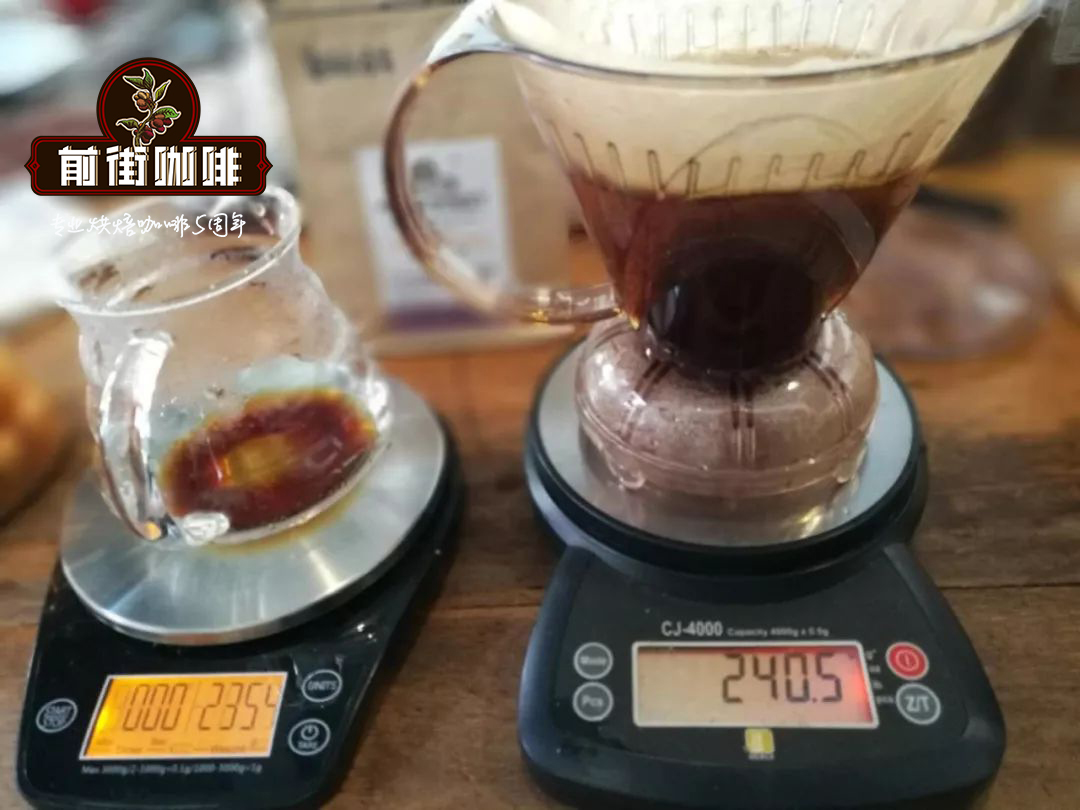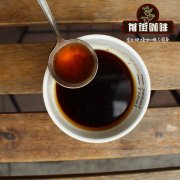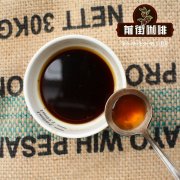Dominica coffee bean powder Dominica coffee how to drink Dominican coffee producing area

Professional coffee knowledge exchange more coffee bean information please follow the coffee workshop (Wechat official account cafe_style)
Most of the coffee growing in the Dominican Republic is scattered in six major producing areas, located in the western half of the valley and on steep slopes. These farms use the height, humidity, temperature and soil of each valley to create favorable conditions for coffee cultivation.
Dominica coffee producing area
Dominica coffee-producing areas are mostly located around the mining areas: the Northern Mountains or Septentrional Mountains, with the highest elevation in the Caribbean, the Central Mountains (Duarte Peak), at 10.415 feet (3175 masl), while the Neiba Mountains or Sierra Leone de Neyba.
Origin and cultivation of coffee in Dominica
About 90% of Dominican coffee is Arabica. Introduced by Spaniards 265 years ago and grown in rural nurseries, the tradition of caring for the vulnerable continues today, programs to lift farmers out of poverty and improve the quality of coffee continue in Dominica coffee producing areas; Dominican Arabica organic coffee grows in alpine forests with trees including native pines, Inga, guava and macadamia nuts. Protect coffee from direct sunlight, provide coffee trees to grow in warm conditions, and provide natural habitat for birds and other wild animals at the same time.
Organic cultivation of coffee in Dominica
Almost all Dominican coffee is grown organically. More and more farms are receiving organic certification from international official organizations, such as the United States USDA (Ministry of Agriculture) and Germany's BCS, and continue to jointly develop coffee producing areas in many countries in a more environmentally friendly manner.
Dominican farmers usually use rich compost as fertilizer to nourish their coffee trees, and then use compost to recover residual biogas from coffee residue for daily use. And restore ecological wetlands to reduce water pollution.
Dominican farmers use careful pruning to promote the health of coffee trees to reduce diseases and insect pests, so they no longer use pesticides. Soil and water conservation is carried out on steep hillsides through pruning and cutting, construction and maintenance of terraces to prevent soil erosion.
Dominica coffee processing method
All coffee in the Dominican Republic is picked by hand, picked with superb harvesting techniques during the harvest season, processed quickly and carefully taken care of every ripe coffee cherry, this labor-intensive way ensures the highest quality coffee products.
Multinational professional coffee production is wet processing (water washing and refining), all coffee cherries are selected within 24 hours, then washed, and all mucous membranes are removed with the cleanest spring water.
Coffee beans dried in tropical sunlight:
In the bright Caribbean sun, the newly washed coffee beans are evenly dried by professional farmers, reducing their moisture content to about 12%. Only the best coffee beans are selected, and the quality of each bean is sorted using a series of machines such as dryers, and these raw beans are separated by hand (Pick Hand). Only the largest and best coffee beans become professional coffee, providing the best quality assurance for Dominica's excellent coffee products, so that the core traditional process of producing quality coffee has been handed down in this peaceful country for hundreds of years.
Improve farmers' livelihoods and protect global ecology
In Dominica, about 500000 people live by growing coffee. Most farmers and their families still live in poverty. Coffee is one of the few crops that can be grown continuously in a limited resource environment and grow in perfect harmony with many native plants.
All farmers in the Dominican Republic follow strict production guidelines to ensure high-quality coffee production and to promote environmental protection. Due to harmonious symbiosis with other plant varieties, the shade of forests and coffee farms forms an important buffer zone between land and agricultural products. Protects orchids, insects, and birds that are rare in natural habitats; more than 40% birds fly from the United States to the Caribbean and inhabit coffee farms in Dominica in winter. The Dominican government is committed to protecting bird habitats and ensuring the environment in which they live for a long time.
The front street suggests Dominica coffee brewing:
V60According to 1Plus 15 ℃ to 91 minutes / time two minutes
Qianjie coffee: Guangzhou bakery, the store is small but a variety of beans, you can find a variety of unknown beans, but also provide online store services. Https://shop104210103.taobao.com
Important Notice :
前街咖啡 FrontStreet Coffee has moved to new addredd:
FrontStreet Coffee Address: 315,Donghua East Road,GuangZhou
Tel:020 38364473
- Prev

What are the characteristics of Dominican coffee? Dominican Coffee hand makes suggestions for Dominican Coffee
Professional coffee knowledge exchange more coffee bean information Please pay attention to the coffee workshop (Wechat official account cafe_style) with the same varieties, the same local conditions, and higher elevations as Blue Mountain Coffee. Dominican coffee, which has been committed to organic farming in recent years, is a good coffee that has been neglected by gluttons. The Republic of Dominica (Dominican Republic) is adjacent to Haiti.
- Next

What are the characteristics of Yemeni mocha coffee beans _ recommended by mocha coffee brand _ is Yemeni mocha coffee good?
Professional coffee knowledge exchange more coffee bean information please follow the coffee workshop (Wechat official account cafe_style) Yemeni mocha beans characteristics: Origin: Yemen grade: excellent granules: full acidity: slightly sour and strong aftereffect, but also sweet evenness: more stable roasting: moderate flavor: with chocolate flavor, slightly alcoholic flavor, spicy stimulation Yemen is the first in the world
Related
- Detailed explanation of Jadeite planting Land in Panamanian Jadeite Manor introduction to the grading system of Jadeite competitive bidding, Red bid, Green bid and Rose Summer
- Story of Coffee planting in Brenka region of Costa Rica Stonehenge Manor anaerobic heavy honey treatment of flavor mouth
- What's on the barrel of Blue Mountain Coffee beans?
- Can American coffee also pull flowers? How to use hot American style to pull out a good-looking pattern?
- Can you make a cold extract with coffee beans? What is the right proportion for cold-extracted coffee formula?
- Indonesian PWN Gold Mandrine Coffee Origin Features Flavor How to Chong? Mandolin coffee is American.
- A brief introduction to the flavor characteristics of Brazilian yellow bourbon coffee beans
- What is the effect of different water quality on the flavor of cold-extracted coffee? What kind of water is best for brewing coffee?
- Why do you think of Rose Summer whenever you mention Panamanian coffee?
- Introduction to the characteristics of authentic blue mountain coffee bean producing areas? What is the CIB Coffee Authority in Jamaica?

